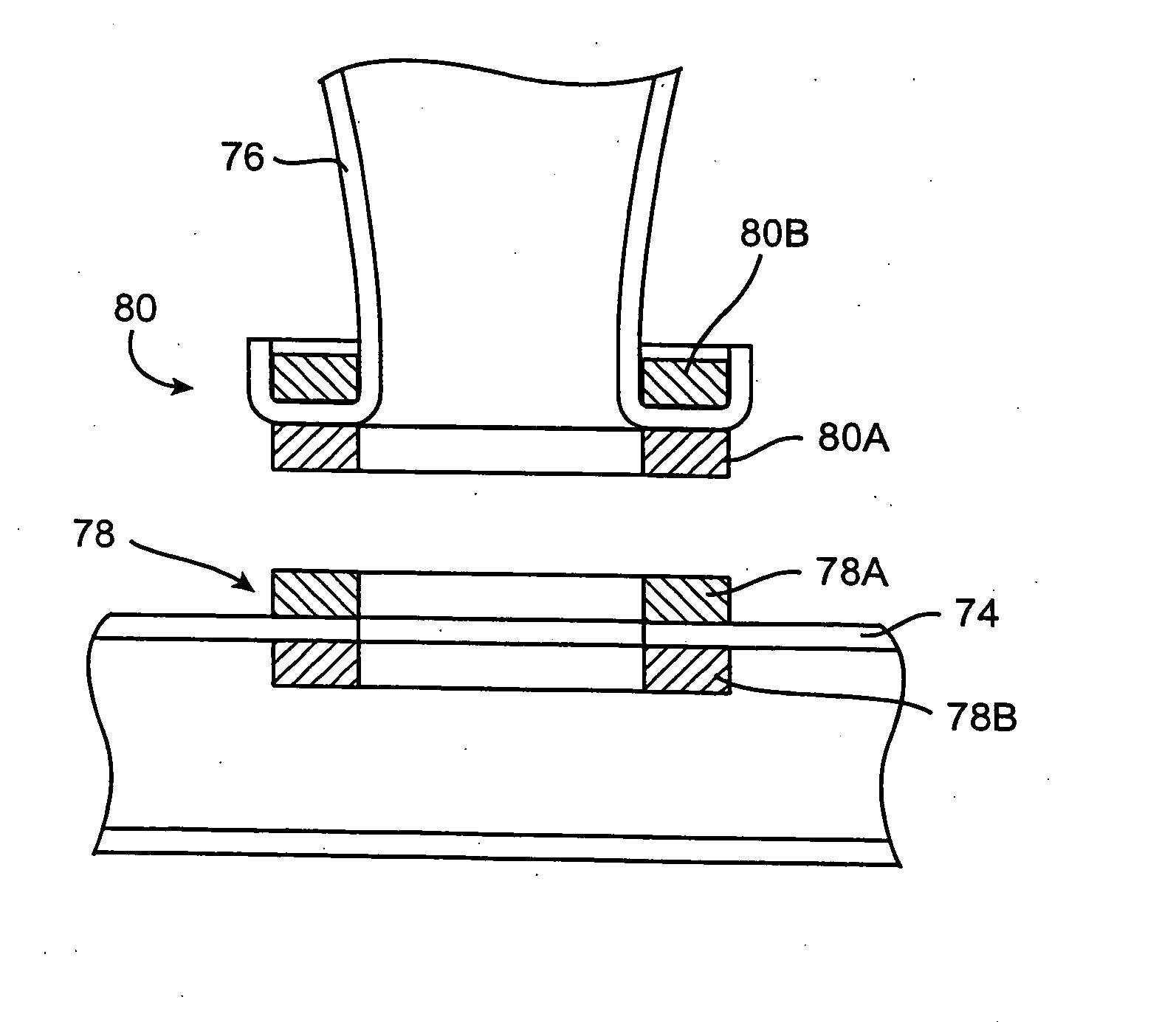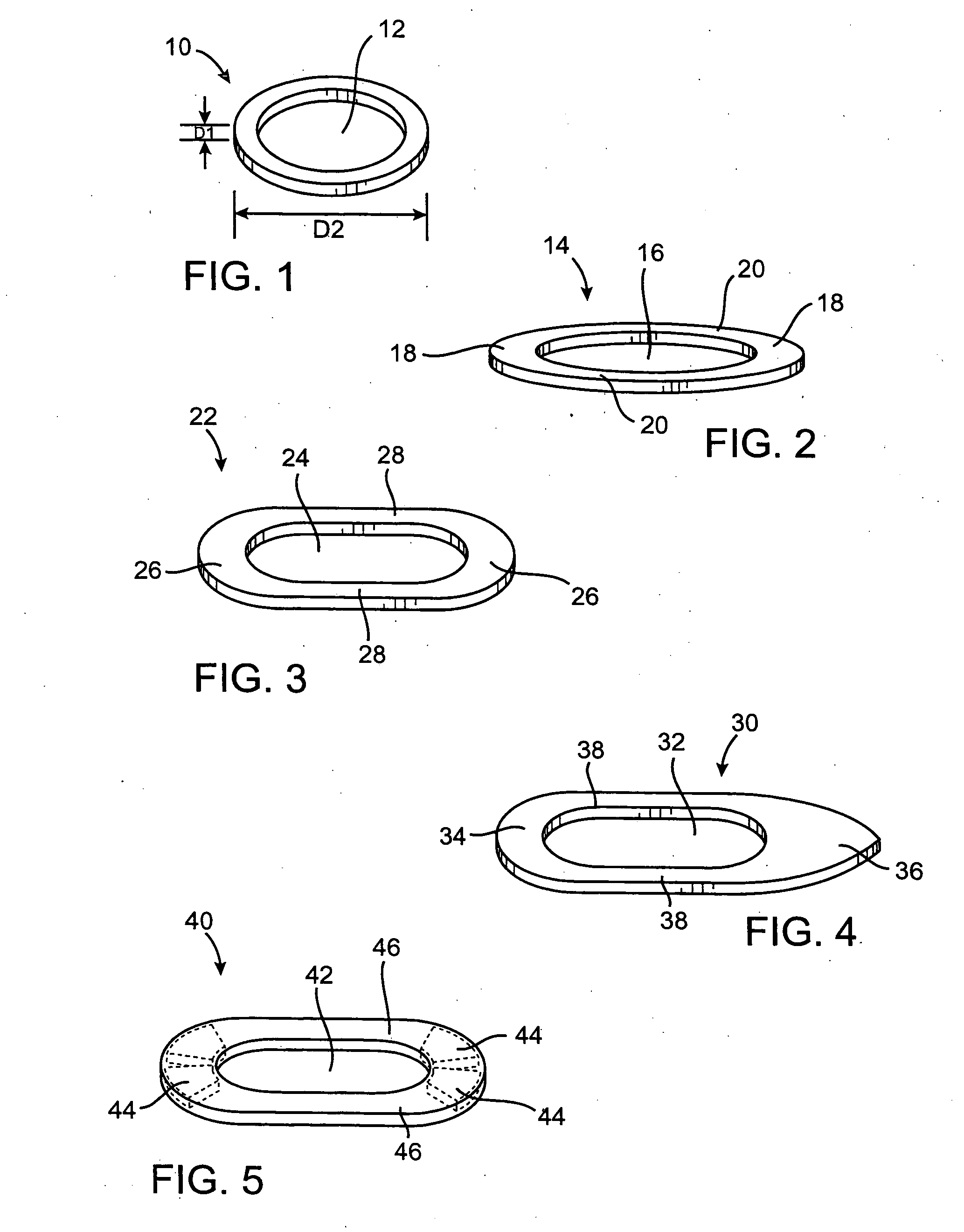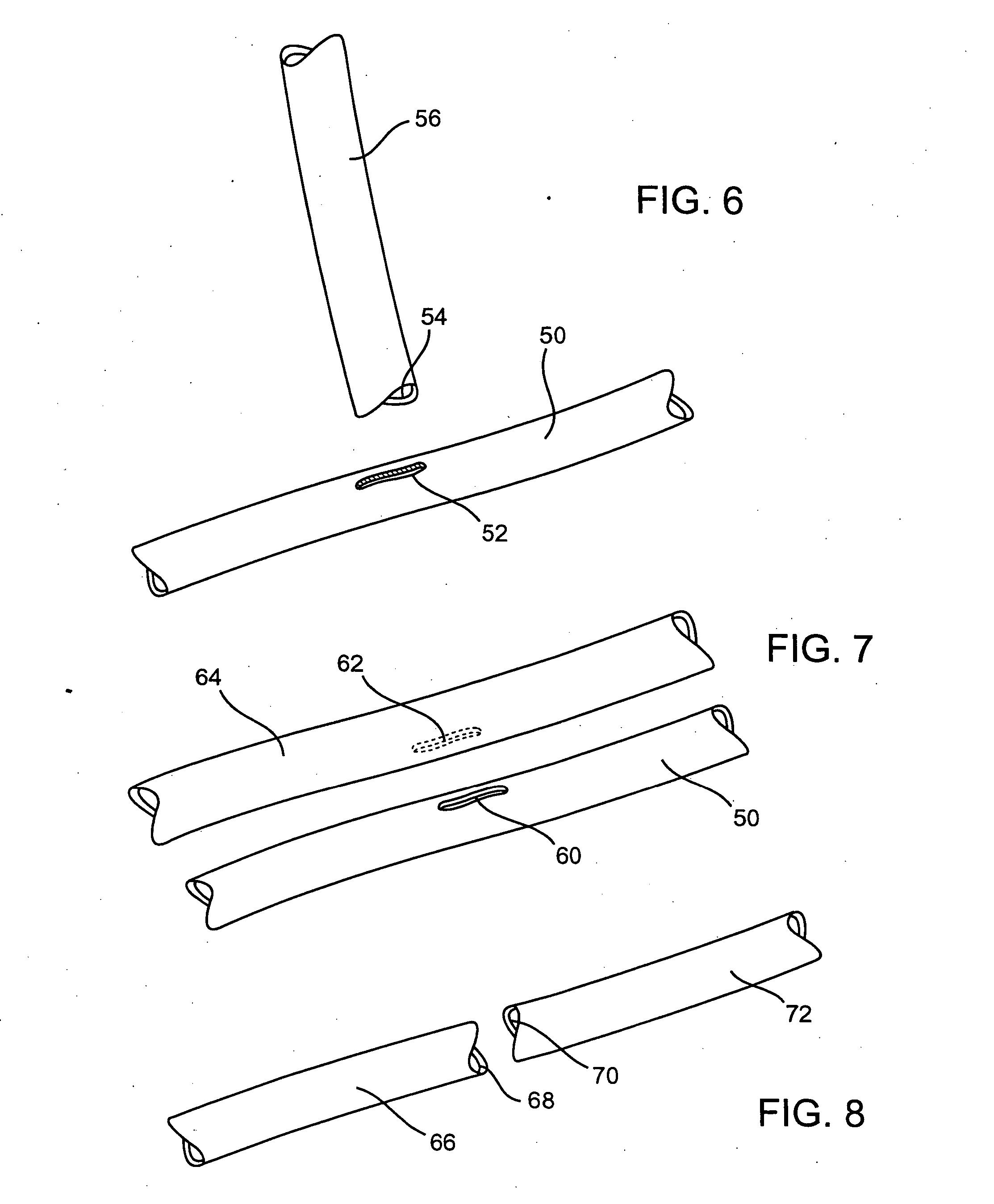Devices and methods for forming magnetic anastomoses between vessels
a technology of magnetic anastomosis and a device, which is applied in the direction of magnetic bodies, blood vessels, surgical staples, etc., can solve the problems of increasing the difficulty of sutured anastomosis, high technical and time-consuming, and the inability to form a sutured anastomosis
- Summary
- Abstract
- Description
- Claims
- Application Information
AI Technical Summary
Benefits of technology
Problems solved by technology
Method used
Image
Examples
Embodiment Construction
[0166]FIGS. 1-5 illustrate several exemplary embodiments of anastomotic securing components constructed according to the invention for use in forming an anastomosis between first and second hollow bodies. FIG. 1 shows a securing component 10 with an annular body and an opening 12 defined by the body. The component 10 is generally plate-shaped and circular in plan view with a constant (or substantially constant) thickness and width around its perimeter. The securing component 10 is sized and configured to be placed adjacent an opening of a first hollow body that has been prepared for anastomosis to a second hollow body. A second securing component would be placed adjacent an opening of the second hollow body for making the anastomotic connection.
[0167]FIG. 2 shows an elliptical anastomotic securing component 14 with an opening 16. The securing component 14 is generally plate-shaped and the opening 16 is configured to provide the securing component 14 with larger end portions 18 than...
PUM
 Login to View More
Login to View More Abstract
Description
Claims
Application Information
 Login to View More
Login to View More - R&D
- Intellectual Property
- Life Sciences
- Materials
- Tech Scout
- Unparalleled Data Quality
- Higher Quality Content
- 60% Fewer Hallucinations
Browse by: Latest US Patents, China's latest patents, Technical Efficacy Thesaurus, Application Domain, Technology Topic, Popular Technical Reports.
© 2025 PatSnap. All rights reserved.Legal|Privacy policy|Modern Slavery Act Transparency Statement|Sitemap|About US| Contact US: help@patsnap.com



